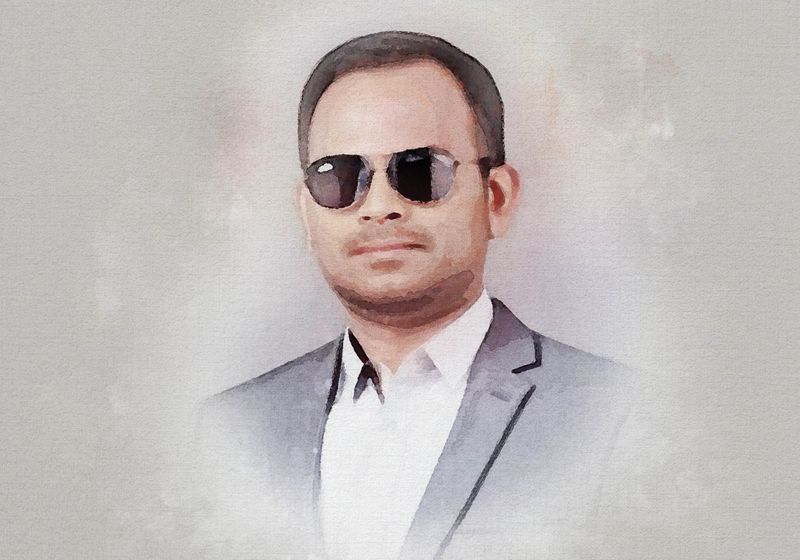As both a tool builder and a bioinformatics innovator, this postdoc aims to accelerate discoveries across neuroscience, oncology, and beyond.
Q | Write a brief introduction to yourself including the lab you work in and your research background.
I am Madhu Sudhana Saddala, a bioinformatics specialist at the University of California, Irvine. My research focuses on single-cell and spatial transcriptomics, multi-omics integration, and systems biology, with particular emphasis on neurodegeneration and cancer. I develop computational methods for analyzing cellular heterogeneity and regulatory networks.
Q | How did you first get interested in science and/or your field of research?
My interest in science began with a deep curiosity about how complex biological systems function at the molecular level. During my early academic years, I was fascinated by the interplay of genes and proteins in driving health and disease, which motivated me to pursue a career in biomedical research. Over time, I became particularly drawn to bioinformatics and systems biology, as they offered an opportunity to integrate large-scale datasets and reveal patterns often overlooked by traditional approaches.
My motivation strengthened when I realized the potential of single-cell and spatial transcriptomics to dissect cellular heterogeneity and unravel mechanisms of neurodegeneration and cancer. The idea that computational methods could bridge raw data with meaningful biological insights inspired me to develop new approaches for analyzing complex omics datasets. Today, I remain driven by the possibility that my research can not only advance our understanding of fundamental biology but also inform precision medicine and therapeutic strategies.
Q | Tell us about your favorite research project you’re working on.
One of my favorite research projects is the development of ClearSeqExtend, an advanced computational framework I designed to improve the analysis of single-cell RNA sequencing (scRNA-seq) data. Traditional methods, such as CellBender, have limitations in handling ambient RNA contamination, batch effects, and integration with downstream analyses. ClearSeqExtend was built to overcome these challenges by incorporating enhanced ambient RNA correction, metadata-driven analysis, doublet detection, and novel visualization strategies.
What excites me most about this project is its comprehensive scope. It not only improves data quality but also integrates cell–cell communication analysis, trajectory inference, and multi-omics compatibility, all within a reproducible R-based workflow. The framework is also being developed as an open-source R package, ensuring accessibility and reproducibility for the broader scientific community.
This project is still under active progress, and we are continuously adding new modules and benchmarking its performance. We plan to release the complete details soon and publish the package as a fully open-source tool. For me, ClearSeqExtend represents both a technical innovation and a contribution toward accelerating discoveries in neurodegeneration and cancer research.
Q | What do you find most exciting about your research project?
The most exciting part of my scientific journey has been the opportunity to bridge computational innovation with meaningful biological discoveries. Early in my career, I was fascinated by how computational biology could unravel hidden patterns in complex datasets. This excitement reached new heights when I began working on single-cell and spatial transcriptomics, where each dataset feels like an unexplored map of cellular diversity and disease mechanisms.
One defining moment was contributing to projects that revealed novel insights into neurodegeneration and cancer biology, areas where heterogeneity often obscures therapeutic targets. Being able to apply advanced analytical frameworks such as network modeling, ambient RNA correction, and cell–cell communication analysis to generate results that directly informed biological understanding has been both intellectually rewarding and personally fulfilling.
Equally exciting has been the chance to develop new tools like ClearSeqExtend, designed to push the boundaries of reproducibility and accessibility in single-cell research. Knowing that these contributions can empower other scientists worldwide to accelerate their discoveries represents the highlight of my career so far, and continues to motivate my pursuit of impactful, translational bioinformatics.
Q | If you could be a laboratory instrument, which one would you be and why?
I would be a sequencer. Sequencers have revolutionized modern biology by enabling researchers to read the language of life with extraordinary depth and precision. They transform complex biological samples into massive datasets, which then serve as the foundation for discovery and innovation.
This resonates strongly with my own scientific philosophy. Much like a sequencer, I aim to decode complexity, whether it is through single-cell transcriptomics, spatial biology, or integrative multi-omics analysis. A sequencer does not provide immediate answers; instead, it generates the raw information needed for deeper interpretation and insight. Similarly, my role as a bioinformatician is to transform that raw data into meaningful biological narratives, uncovering mechanisms of neurodegeneration, cancer, and other diseases.
I would embody a sequencer because it symbolizes the intersection of technology and biology, precision, and scale. It captures the spirit of modern science, pushing boundaries, enabling discovery, and empowering others to see what was once unimaginable.
Are you a researcher who would like to be featured in the “Postdoc Portraits” series? Send in your application here.

